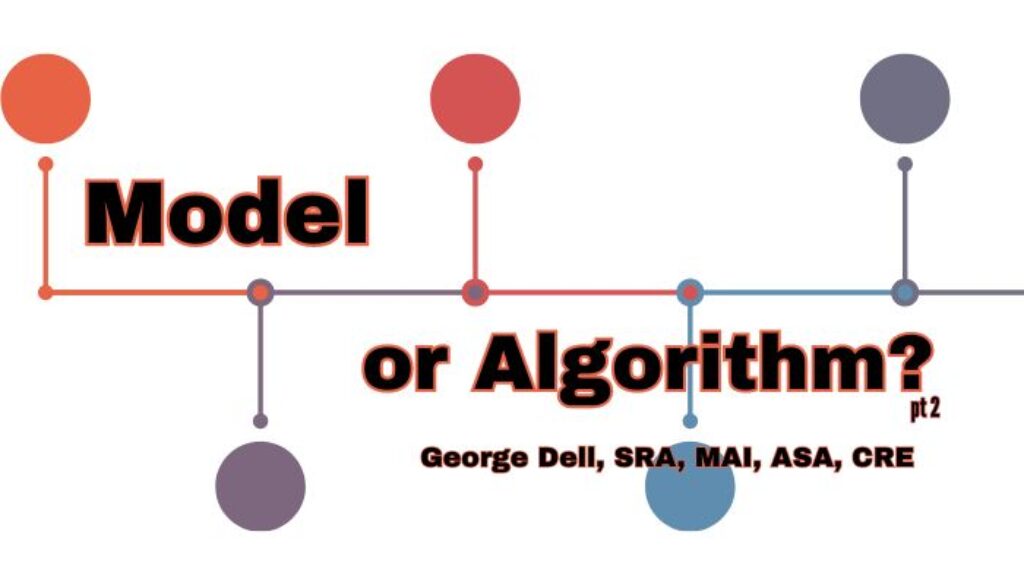The seminal appraisal model was espoused by George Schmutz in the 1940’s. His “appraisal process” followed the works of others starting in 1927 with Arthur Mertzke who translated economic principles to the unique economic features of real estate.
Those works presented “systematic procedures” for applying the three traditional approaches to value.
Editor’s Note: Find Part 1 of this series here.
In order to understand our own profession, the needs of our clients, and our public trust, it is good to look at words/basics, our history, and how we go from 1927 to 2027.
Each of the three approaches may be explained as a step-by-step algorithm:
- Sales comparison – Pick comps, make adjustments, explain.
- Cost – Use #1 for land value, add construction costs, deduct depreciation.
- Income – Pick comps, improve income/expense data, compare, explain adjustments.
An algorithm is a set of rules to follow, in sequence, to solve a problem.
A model is the result of the algorithm. The Appraisal of Real Estate states that the valuation process “is a model.”
The algorithm rules are best followed explicitly, exactly, and consistently. The model (which applies the algorithm) requires judgment and adaptation to the data at hand.
This “modeling” judgment requires a field-related expert, who is also competent in the algorithms which best apply to answer the question asked. Judgment is needed to help identify the client’s problem, and the path (algorithm) to get there. We call this a part of the “scope of work.” A proper scope of work requires interaction with the user/client, to properly identify the problem to be solved, and to help decide on an appropriate algorithm.
The appropriate model for the question asked is the goal. That’s the main need for human judgment.
There are four types of analytical models as used in data science. These parallel the types of analysis performed in valuation – whether by human or by “automation”: Descriptive, diagnostic, predictive, and prescriptive. Let’s look.
- Descriptive analysis is important in identifying and exploring a data set in order to find information useful to a valuation.
- Diagnostic analysis considers relevance. For valuation, the key questions are: “Is it competitive, or not?” “Does it help towards the solution, or not?”
- Predictive analysis results in a value with some level of uncertainty. Point value predictions provide some usefulness, but lack in answering the “certainty” part of what is important.
- Prescriptive analysis suggests a course of action. “Make a loan, or not.” “Invest in A, or in B.” “Is this a fair/equitable solution, or not.”
In future parts of this topic, we will consider where appraisers’ critical thinking processes are algorithmic, or modeling in nature. We will look at whether AVMs (Automated Valuation Models) are models, or algorithms. And of course, we must do diagnostic analysis on the relationship between AVM algorithms to human appraiser judgment.
